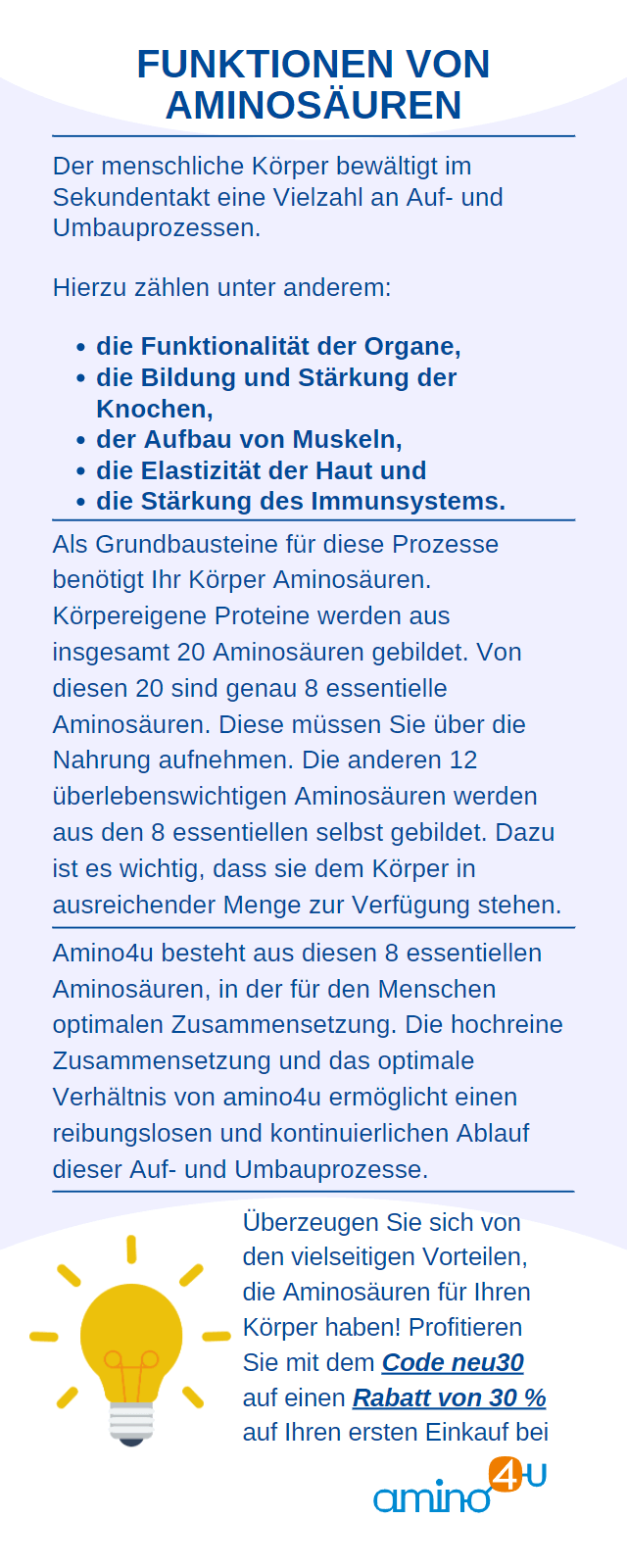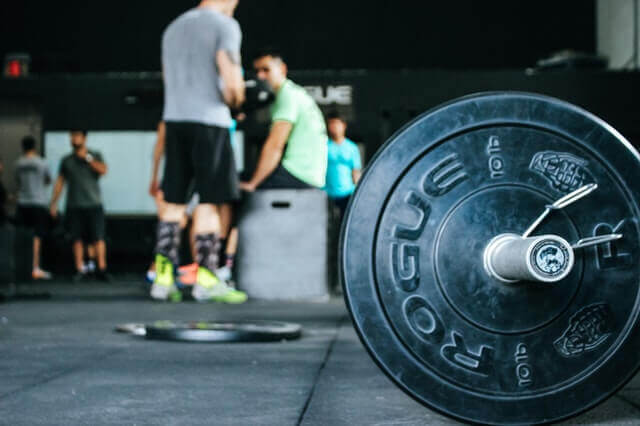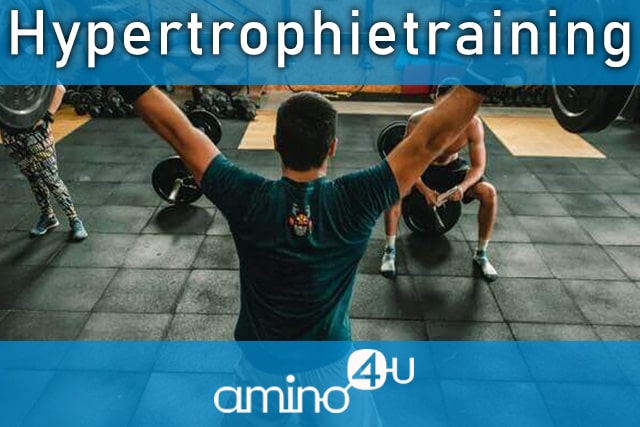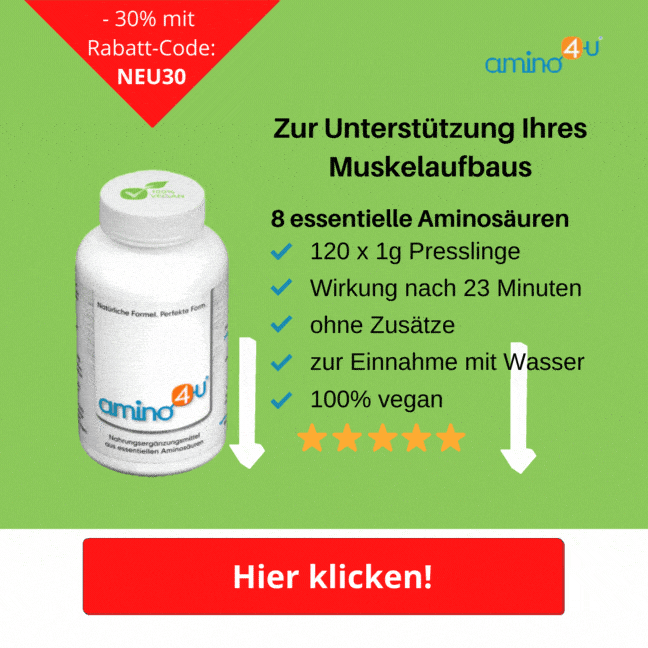Big muscles and a lot of performance - that is the dream of many athletes. Targeted hypertrophy training supports this desire. Here you will find out what is important in strength training and how you can specifically support this process.
What is Hypertrophy?
From a purely medical perspective, hypertrophy is the technical term for the growth in size of an organ. The goal of most bodybuilders is to promote and even accelerate muscle growth .
Growth occurs through a continuous enlargement of the individual muscle cells . Simply put, hypertrophy is the growth of muscle thickness .
Muscle hypertrophy can be achieved in various ways - both natural and artificial. Thickness growth occurs naturally when there is above-average strain on the muscles .
If you challenge the muscles beyond normal levels with special hypertrophy training , the organism automatically stimulates growth. These ensure that the amino acids obtained from dietary proteins are stored in the muscle fibers .
A study at Eastern Michigan University examined the exact role of proteins in this process.
The natural growth of muscle thickness can take place in two forms. The so-called myofibrillar hypertrophy is the “ real ” form of muscle thickening.
This happens when there are enough amino acids to be stored in the muscle. In order to optimize this process, a very specific form of hypertrophy training is necessary, which we will discuss in more detail later.

What role do amino acids play?
In this context, it is important to first take a look at the amino acids. There are around 20 amino acid proteins present in the human organism.
There are non-essential amino acids that the body can produce itself. The essential amino acids are crucial for building muscle.
As various studies, including a collaboration between several US universities , have shown, essential amino acids are absorbed through food.
However, the exact composition of the different amino acids is important in order to specifically promote muscle growth. Creating this amino acid profile through food is not entirely possible in everyday life.
It may therefore be advisable to support muscle growth by taking a suitable preparation. amino4u is a dietary supplement that can provide the body with a precisely tailored profile of all essential amino acids.
Tablets or powders have the property of being available in the blood after just 23 minutes. In this way, the muscle fibers can quickly access these building blocks in natural form, which are so necessary for growth.
Be careful with medications during hypertrophy training
Some bodybuilders try to supplement the process of hypertrophy by taking anabolic steroids. An anabolic steroid is a muscle building preparation that uses hormones to stimulate muscle growth.
The focus is on different types of testosterone. This is “ doping ,” which is punished as a violation in sports circles. In addition to the moral aspect, research shows that taking it has significant health risks .
Scientists at the University of New Jersey have demonstrated these side effects of anabolic steroids:
- Damage to the liver and kidneys
- increased risk of a heart attack
- increasing cancer risk
- psychological problems such as depression and mood swings
- Decrease in reproductive capacity
- Increase in testosterone levels, which leads to masculinization in women
- increased water retention in the tissue

What does the ideal hypertrophy training look like?
Without training stimulus, there is no growth - for athletes this means always overtaxing the muscles during exercises so that muscle mass builds up .
After a set, the overworked muscle becomes overtired. Small tears also occur in the muscle fibers during training, which are called microtraumas. During the subsequent recovery period , the body repairs these injuries by storing new proteins in the muscles.
Because the muscles want to prepare themselves as best as possible for the next stress, additional strengthening takes place. This means that you adapt to the training stimuli step by step. The result can be the desired muscle building .
A large-scale study by the University of Gothenburg looked intensively into muscle training .
The researchers found that successful muscle training is based on the following factors:
- Intensity of training
- Training volume
- frequency
- Pace of exercises
- regeneration
Intensity of hypertrophy training
According to the researchers, the so-called metabolic stress is crucial for muscle growth. This means you should choose appropriate weights that challenge your muscles accordingly. It is also important that you continually increase the weight.
But what does appropriate actually mean in hypertrophy training ? The factor 1 RM is important here. The abbreviation stands for “ One Repitition Maximum ”. This means the maximum weight you can lift in one exercise.
The Swedish study underlines that hypertrophy can generally occur at all weights. However, according to results , heavy weights are better for building muscle .
The researchers recommend choosing a weight that is at least 65% of your personal 1RM - especially if you already have some training experience.
The analysis also showed that muscle growth is likely to be stimulated particularly well in a range of 75% of your personal 1RM. According to studies, this value appears to be the optimal combination of metabolic stress and adaptation of the muscle fibers.
The study leaders recommend that you generally train in the middle range around 65% of your personal 1 RM, but occasionally also lift higher weights to maximally stimulate the muscles.

Training volume and frequency
The training volume refers to the sum of all repetitions and the design of the sets during a workout. According to the research results, it may make sense not to rely on one long set with the weights, but rather to split the repetitions of the exercise into several sets.
A set should not contain more than twelve repetitions . As the example of the elbow flexor from the Swedish study shows, the total number of repetitions also matters.
If they were between 7 and 38 across all sets, muscle growth increased by 0.15% per day. At 46 to 66 repetitions it decreased to 0.26%, while at 74 to 120 repetitions a decrease to 0.18% was observed.
This means that a training regimen of three to five sets with a maximum of 12 repetitions would optimally promote muscle hypertrophy . The following applies: If the last repetition can be completed with ease , the weight should be increased.
Experienced bodybuilders have known for a long time that it is more beneficial for building muscle in the long term to not only complete the training volume in one session per week, but to do several sessions.
The study by the University of Gothenburg also comes to this conclusion. But which frequency is best for hypertrophy ?
Here the scientists recommend going to the gym at least twice a week . Beginners can train up to four times a week. However, it obviously also depends on how often individual muscle groups should be trained in a week.
Especially at an advanced level, a lot doesn't seem to help much. The guideline from the study is that for targeted muscle growth it could be sufficient to train each muscle group twice a week.
No evidence of an increase in hypertrophy could be found for a more intensive workout.

Pace of exercise and regeneration
A specific sequence of exercises does not appear to be necessary to promote muscle hypertrophy , according to study results from Sweden. But obviously it depends on the pace at which the repetitions are completed.
An exact study of the optimal speed for weight lifting is still pending. However, according to studies, fast processes seem to be more suitable for specifically promoting muscle growth .
However, the researchers emphasize that hypertrophy can basically occur at any pace. A message that will reassure beginners in particular and ensure less stress in the gym.
For a long time, the prevailing opinion was that working with as many repetitions as possible and short rest periods was crucial for the success of hypertrophy training .
The current study situation does not necessarily support this opinion. However, there are no results that can be compared. As the researchers from Gothenburg point out, other studies did not always take training volume into account.
There were studies with subjects who trained more often with low weights and others with longer rest periods and higher weights. The bottom line was that the low-weight group experienced slower muscle growth .
However, the role of the length of the regeneration phase cannot be derived from this. Nevertheless, according to the current state of science, constant training with high weight requires correspondingly long rest breaks, especially when the value of 1 RM approaches 100%.
Because it is clear that hypertrophy occurs primarily in the regeneration phase .
Conclusion
Hypertrophy is a completely normal natural reaction to strong physical stress. The thickening of the muscles can be specifically supported through a targeted diet and, above all, through nutritional supplements in the form of amino acids .
Even if it sounds tempting, athletes should not resort to anabolic steroids - the cost to their health is too high.




